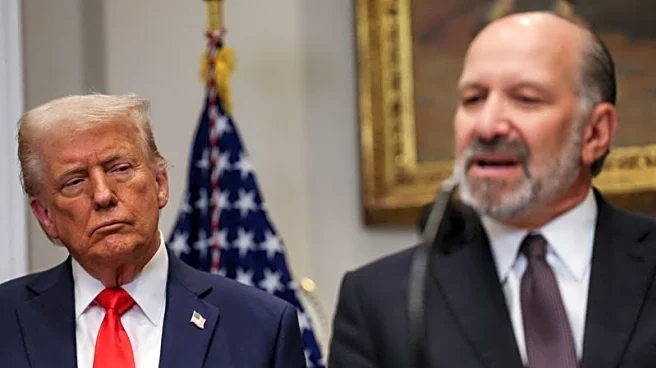What's Happening?
President Trump has issued an executive order that could potentially alter the landscape of workplace retirement plans by allowing them to offer alternative investment options. This move is aimed at providing employees with more diverse investment choices within their 401(k) plans. However, the implementation of such changes is expected to be complex, as fiduciaries will need to conduct extensive due diligence before any new options can be introduced. The executive order is part of a broader effort to enhance the flexibility and attractiveness of retirement savings plans for American workers.
Why It's Important?
The executive order could have significant implications for the retirement planning industry and employees across the United States. By potentially expanding the range of investment options available in 401(k) plans, employees might have the opportunity to diversify their portfolios beyond traditional stocks and bonds. This could lead to better retirement outcomes for some, but it also introduces new risks and responsibilities for plan fiduciaries. The need for thorough due diligence could delay the introduction of new options, and there is a possibility that some plans may choose not to adopt these changes at all. The move reflects ongoing discussions about how to modernize retirement savings in a way that balances opportunity with security.
What's Next?
As the executive order is implemented, retirement plan administrators and fiduciaries will need to assess the feasibility and desirability of offering alternative investment options. This process will involve evaluating the potential risks and benefits to plan participants, as well as ensuring compliance with regulatory requirements. Stakeholders in the retirement planning industry, including financial advisors and plan sponsors, will likely engage in discussions about best practices for incorporating new investment options. Employees should stay informed about any changes to their retirement plans and consider seeking professional advice to understand how these changes might affect their retirement strategy.













